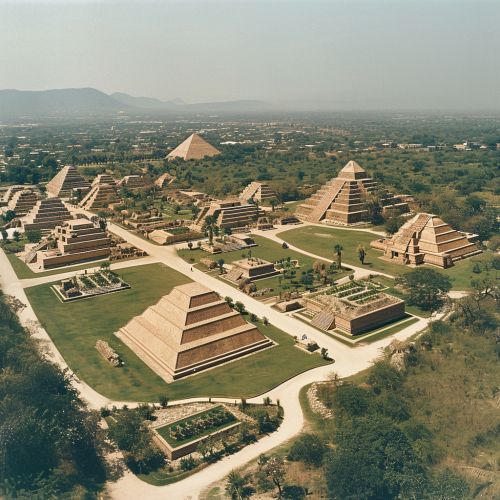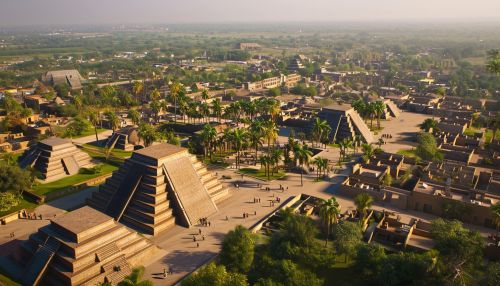Mesoamerican civilizations
Introduction
The Mesoamerican civilizations were a group of complex, indigenous cultures that developed in parts of Mexico and Central America prior to Spanish exploration and conquest in the 16th century. These civilizations developed complex societies, advanced architecture, intricate road systems, and some of the world's earliest written languages. The civilizations included the Olmec, Zapotec, Maya, Teotihuacan, Mixtec, Huastec, Purépecha, Totonac, Toltec, and Aztec, which flourished for nearly 4,000 years before the first contact with Europeans.


Olmec Civilization
The Olmec is considered the 'mother culture' of Mesoamerica and laid many of the foundations for the civilizations that followed. Originating in the tropical lowlands of south-central Mexico, the Olmec civilization is best known for its colossal head sculptures and for being one of the first Mesoamerican civilizations to develop a writing system.
Zapotec Civilization
The Zapotec civilization was an indigenous pre-Columbian civilization that flourished in the Valley of Oaxaca in Mesoamerica. The Zapotec established great city states such as Monte Alban, and are credited with the invention of one of the earliest forms of writing in Mesoamerica.
Maya Civilization
The Maya civilization was one of the most dominant indigenous societies of Mesoamerica. The Maya civilization is renowned for its progress in the fields of art, architecture, mathematics, calendar-making, and astronomy. They developed a highly complex hieroglyphic writing system, and their architectural innovations included the construction of complex cities and grand pyramids.
Teotihuacan Civilization
The Teotihuacan civilization was a pre-Columbian Mesoamerican city located in the Basin of Mexico. At its zenith, it was the largest city in the pre-Columbian Americas. Teotihuacan was known for its multifamily residential compounds, the Avenue of the Dead, and the impressive pyramids of the Sun and the Moon.
Mixtec Civilization
The Mixtec were an indigenous Mesoamerican civilization that inhabited the region of Oaxaca, Puebla, and Guerrero in the modern-day states of Mexico. The Mixtec were known for their exceptional mastery in metallurgy and for their codices, which are considered among the finest examples of ancient Mesoamerican literature and art.
Huastec Civilization
The Huastec were an indigenous civilization that occupied the northern Gulf Coast region of Mexico. The Huastec are distinct from other Mesoamerican civilizations due to their isolation from the rest of Mesoamerica, their unique language, and their architectural style which includes circular temples instead of the usual rectangular ones.
Purépecha Civilization
The Purépecha or Tarascan state was a major civilization located in the modern-day Mexican state of Michoacán. The Purépecha were known for their metallurgical skills, particularly in the working of copper, and were also one of the few Mesoamerican civilizations to resist Aztec domination.
Totonac Civilization
The Totonac were an indigenous Mesoamerican culture that inhabited the eastern coastal and mountainous regions of Mexico. The Totonac are known for their production of ceramics and cotton textiles, and for being the possible builders of the ancient city of El Tajín.
Toltec Civilization
The Toltec civilization was a powerful pre-Columbian empire and culture that dominated the central Mexico region from the 10th to the 12th century. The Toltecs are credited with the creation of fine pottery, metalwork, and the architectural style seen in the ancient city of Tula.
Aztec Civilization
The Aztec civilization was the last of the great Mesoamerican civilizations. Located in the Valley of Mexico, the Aztecs are best known for their enormous capital city of Tenochtitlán, their military might, and their practices of human sacrifice.
